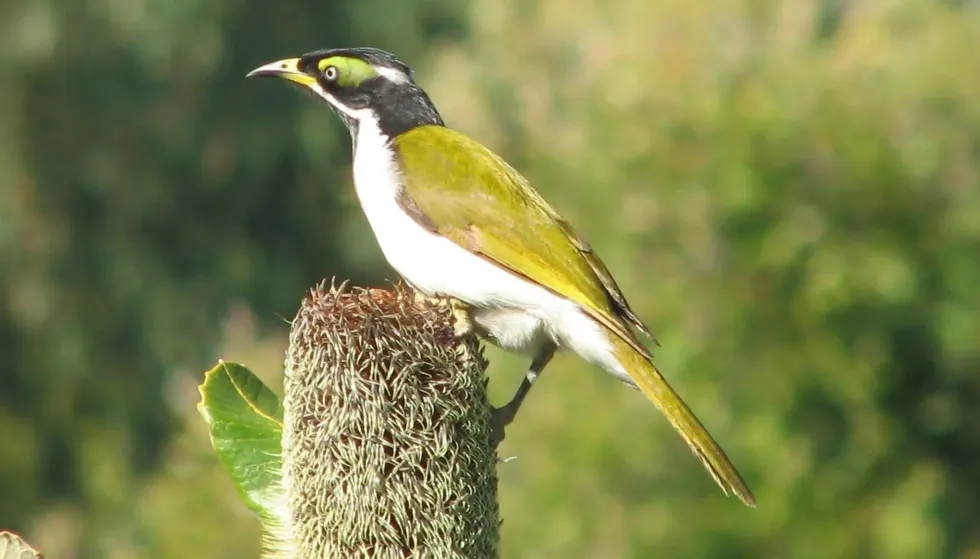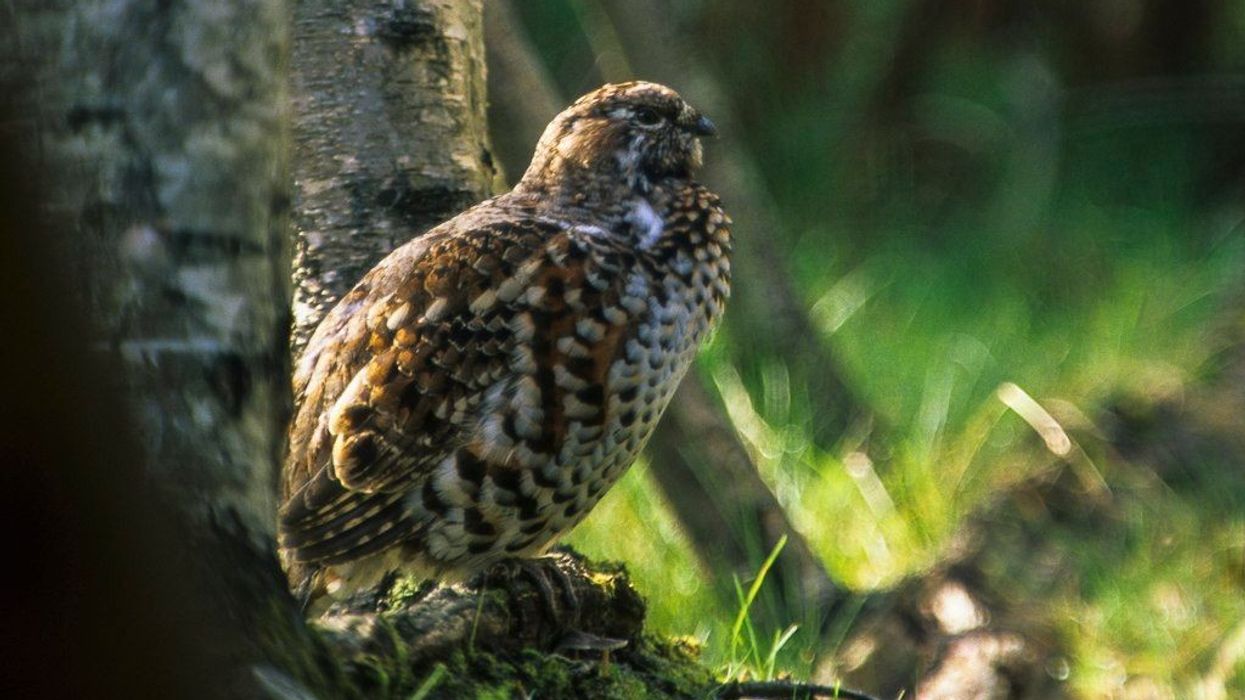Affectionately called sugarbirds, honeyeater birds are some of the most popular birds spotted in and around New Zealand. The honeyeater is a small-sized bird frequently found perching on trees of various sizes all across Caledonia and the surrounding area.
There are various shades you can find in them, usually ranging towards the warmer tones of brown, red, yellow, gray, or brown. Their names are usually divided according to these colors, or sometimes, the color of their feet.
They also communicate in a variety of ranges and voices, with the smaller birds having shriller tones and the larger birds with more resounding, deeper notes of voice. Honeyeaters visit a wide variety of flowers, both native and alien.
Sugarbirds favor proteas. Honeyeaters eat many fruits in wetter woods, particularly in New Zealand and north and west of New Guinea.
The honeyeater family is just one of the various beautiful bird species in the world. There are other animals in the world that you can take a look at, like the honey bee and honey possum.
Honeyeater Interesting Facts
What type of animal is a honeyeater?
The honeyeater is a type of bird that belongs to the order Passeriformes.
What class of animal does a honeyeater belong to?
The honeyeater belongs to the class of birds, Aves and the family is Meliphagidae.
How many honeyeaters are there in the world?
On the other end of the Wallace Line, there are only one species of honeyeaters on the island of Bali. There are 190 species in 55 genera, nearly half of which are native to Australia and found in New Guinea.
Where does a honeyeater live?
The honeyeater bird lives in the woods. The honeyeater distribution range is throughout Australia, Moluccas, north and west of New Guinea, Melanesia, Lesser Sundas, Micronesia, and west to Bali, New Zealand, New Caledonia, Polynesia, and the Hawaiian Islands. These sugarbirds can also be found in southern Africa.
Honeyeaters resemble and act like other nectar-feeding passerines birds around the world, such as flowerpeckers and sunbirds. However, they are unrelated and their similarities are the result of evolutionary processes.
What is a honeyeater's habitat?
Honeyeaters can be found in New Guinea's subalpine scrub, as well as all types of forests and mangroves. These species are abundant in woodlands and other semi-arid scrubs.
However, the canopy is home to the majority of honeyeater species in forests and woods. The regent honeyeater is mostly found in the interior ranges of south-east Australia, in temperate woods and open forests. It is registered federally as a threatened species.
Who do honeyeaters live with?
Honeyeaters are usually spotted alone, preferring to congregate in family groups or scattered flocks. However, large flocks of migrating species are possible.
How long does a honeyeater live?
The approximate longevity of honeyeater is between 10-15 years.
How do they reproduce?
Honeyeaters have extensive breeding seasons in general. The breeding season of many species runs from late winter through to late spring. However, breeding may increase in July and August in regions where nectar is copious in the winter.
Honeyeater nests can be found in various locations, from low bushes to high up in lofty trees. Most species have a normal clutch size of two eggs.
Male and female birds and their helpers nourish the young. Insects make up most of the diet, while certain young species are offered nectar. The time it takes for a chick to leave the nest varies from 11-20 days.
What is their conservation status?
The conservation status of most of the species of honeyeater birds is Least Concern declared by IUCN Red List.
Honeyeater Fun Facts
What do honeyeaters look like?
The underparts of many small honeyeaters appear yellow and they are olive, green, or brownish. The legs and bill may also be colored differently. The bill can be small and straight, somewhat decurved, or extremely long and significantly decurved.
All honeyeaters have a bristle tongue with several bristles at the end. Honeyeaters have powerful feet and legs, and their claws are generally sharp. The blue-faced honeyeater has wide wings and rounded ends with a medium angular tail.
How cute are they?
These little birds with their brightly colored bodies and yellow bills are adorable.
How do they communicate?
Honeyeater songs and calls range from exquisite to harsh and irritating. Smaller species use whistling sounds and twittering songs.
How big is a honeyeater?
The length of the honeyeater is about 3–20 in (7.6–50.8 cm). On the other hand, the rufous hummingbird, related to honeyeaters, measures up to 2.8-3.6 in (7.1-9.1 cm). Therefore, honeyeater birds are larger than rufous hummingbirds.
How fast can a honeyeater fly?
Honeyeaters, unlike hummingbirds, do not have major modifications for hovering flying. Hover flying is when the bird stays in the same controlled airspace by flapping their wings quickly.
However, smaller family members do occasionally hover hummingbird-style to harvest nectar. In addition, honeyeaters enjoy flitting around perch to perch in the surrounding foliage, stretching up, diagonally, or hanging upside down when necessary.
How much does a honeyeater weigh?
The average weight of these honeyeater birds is 0.25–7 oz (7–198.4 g).
What are the male and female names of the species?
There is not any particular name for male and female birds of honeyeater species.
What would you call a baby honeyeater?
The offspring of honeyeater birds has no specific title. Similar to other baby birds, we can call them honeyeater chicks.
What do they eat?
Honeyeaters can be nectarivorous, frugivorous, insectivorous, or a mixture of nectar and insectivorous. Honeyeaters ingest various nectar with invertebrates, particularly insects but not bees, in different proportions.
Many species have a well-developed brush-tipped tongue with frayed and fringed bristles that rapidly absorb liquids. The tongue is flipped fast and frequently into a flower whenever the bill is closed, with the upper mandible squeezing any liquid out. Common swifts are insectivores an eat a variety of flying insects.
Are they poisonous?
These species with yellow bills are not poisonous.
Would they make a good pet?
Nutritional imbalances raise the risk of sickness and create havoc in normal animal behavior because the traditional diet of these birds comprises pollen and nectar from local blooms and insects. Therefore, keeping this sugarbird as a pet is not recommended.
Did you know...
The crescent honeyeater (Phylidonyris pyrrhopterus) is a honeyeater bird of the family Meliphagidae found in southern Australia. It is most strongly related to the common New Holland honeyeater (Phylidonyris novaehollandiae) and the white-cheeked honeyeater (Phylidonyris niger), both of which are members of the Phylidonyris genus.
Nectarivore species such as hornets are eaten both raw and cooked in Japan.
What are the different types of honeyeaters?
There are about 190 species under 55 genera that belong to honeyeaters. Some of them are the painted honeyeater, dark-brown honeyeater, and olive honeyeater.
Are honeyeaters native to Australia?
Australian honeyeaters are members of the Meliphagidae family, including Australian chats (Epthianura), myzomelas, wattlebirds, friarbirds, and miners, who comprise 187 species, 50% of which are located in Australia. Meliphagidae is the family of Australian chats (Epthianura) and honeyeaters.
Here at Kidadl, we have carefully created lots of interesting family-friendly animal facts for everyone to discover! For more relatable content, check out these black-capped chickadee facts and killdeer facts for kids!
You can even occupy yourself at home by coloring in one of our free printable honeyeater coloring pages.










